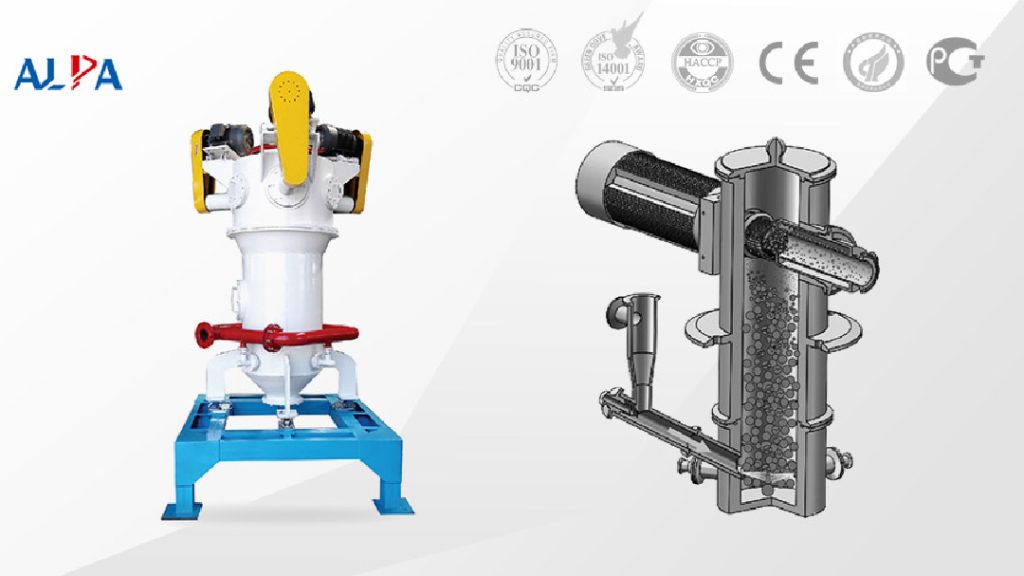Application and equipment selection of jet mill

In recent years, as the superior performance of ultrafine particles has been continuously affirmed, more and more researchers have begun to pay attention to the research work of fine powder manufacturing. As an important preparation method of ultrafine powder, jet milling technology has become one of the preferred methods for developing various high-performance micropowder materials.
The jet mill, also known as jet mill or flow energy mill, uses high-speed airflow to make the material collide with the impact parts, impact, shear and other effects to pulverize. The product obtained by pulverizing the material with a jet mill has uniform fineness, narrow particle size distribution, high purity, smooth particle surface, regular shape, and good dispersibility. During the crushing process, the material is less polluted, and even a pollution-free and sterile environment can be achieved, so it can be applied to ultra-fine crushing in fields such as food and medicine that are not allowed to be contaminated by foreign objects. The jet mill does not release a lot of heat during the crushing process, so it is more suitable for crushing materials with low melting point or heat sensitivity than other crushing equipment. The degree of automation in the production process is high and can be used for large-scale industrial production. Jet milling can also realize the joint operation of crushing and subsequent production steps. For example, the crushing and drying of materials can be realized at the same time, and the solution can also be sprayed during crushing to coat or modify the surface of the powder. But there are disadvantages such as large energy consumption.
Types of Jet Mills
Spiral Jet Mill
Spiral Jet Mill, also known as horizontal disc jet mill, is the earliest and most widely used jet mill in industry. It has the advantages of simple structure, convenient operation, self-grading, etc., but the impact kinetic energy of the equipment is not large, and the crushing strength is low. When processing materials with high hardness, the inner wall of the body will collide and rub violently with the inner wall of the grinding chamber due to the action of the material with the high-speed airflow, which will aggravate the pollution of the grinding chamber and cause certain pollution to the product. It is suitable for a wide range of materials, especially materials composed of various aggregates or aggregates.
Counter-jet jet mill
Counter-jet jet mill, also known as counter-jet jet mill and reverse jet mill, is a kind of equipment with high energy utilization rate. Since the crushing process mainly relies on the high-speed collision between particles, it can effectively avoid the wear of the impacting parts by the high-speed airflow, and at the same time improve the problem of material contamination, and the product particle size is finer; but the equipment occupies a large area, high energy consumption, and wide particle size distribution. It is often used to crush hard, brittle and viscous materials.
Fluidized bed jet mill
Fluidized bed jet mill is a new type of jet mill, which has the advantages of narrow particle size distribution, high crushing efficiency, low energy consumption, less product pollution, and less wear and tear of accessories, but the cost of equipment is relatively high. Since the material needs to be treated in a fluidized state before it can be collided and crushed by the air stream, the fluidized bed jet mill usually requires the crushed material to have sufficient fineness, and the requirement for high-density materials is more obvious. It is often used for superfine crushing, dispersing and shaping of materials in synthetic resin, phenolic resin, medicine, cosmetics, advanced ceramics, magnetic powder, battery materials and other industries.
In the future, the mainstream development trend of ultra-fine jet milling equipment will be mainly manifested in increasing the output of a single machine and reducing energy consumption per unit of product; improving product fineness and strengthening the crushing limit of equipment; online regulation of product fineness and particle size distribution, etc.
